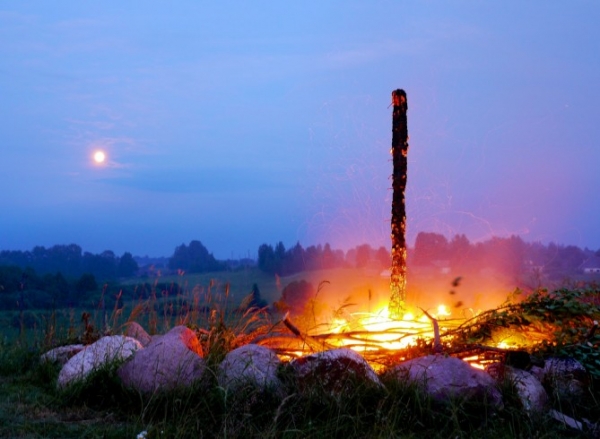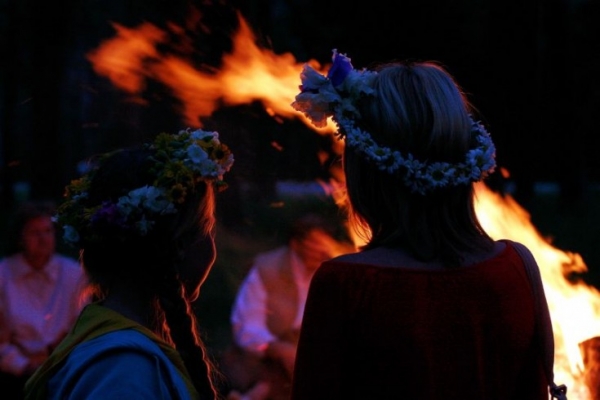Jāņi (summer solstice)
Jāņi is the most popular Latvian festivity. It is a day when cities vacate and every civil servant and bank clerk shows their pagan side. It originated as an ancient fertility festival celebrated after sowing the crops and before gathering harvest. Latvians sing, dance, eat and are merry during Jāņi. Cheese with caraway seeds, meat patties and beer are a must for every table. People light bonfires, jump over them and celebrate until the sunrise. Romantic couples leave the crowd to look for the “flower of the fern”, which is alleged to bloom only in the night of Jāņi.latvian boy smiling with midsummer flowersFamilies get together in their countryside homes. They make bouquets and wreaths out of herbs, flowers and leaves. Women traditionally wear flower wreaths, while men have theirs made of oak leaves or twigs. The livestock and fences are adorned with wreaths. Gates and rooms are decorated with birch, oak, and rowan branches. lielupe midsummer celabration in latvia The celebration used to take place during the longest day and the shortest night of the year, June 21. The Christianization of Latvia moved the date forward to the eve of June 24, the St. John Day. The Soviet authorities prohibited the celebration altogether in the 1960’s as nationalistic. Many defied the ban and went on to express their national identity through the traditional festivities.burning bonfire in midsummer Jānis is the most popular Latvian personal name. Currants are called “jāņogas” (“berries of Jānis”) in Latvian, as they mature around Midsummer.
Author Withheld (Age out of range)






